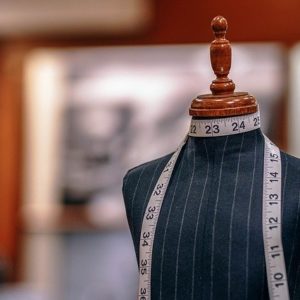What Is AQL (Acceptable Quality Level)
AQL is an abbreviation for Acceptable Quality Level. When it comes to quality in the garment export sector, one of the most commonly used terms in AQL (Accepted Quality Level). The majority of acceptance decisions for apparel/garment shipments for the export market are based on AQL-based sample strategies.
In the garment industry, before accepting finished items from the manufacturer, the buyer inspects the goods. They provide the manufacturer with AQL (Acceptable Quality Level) for the product. If the AQL inspection pass, it implies the items are of acceptable quality. The result of inadequate quality is a failed AQL inspection.
The AQL level varies from one process to the next, from one product to product, and even from one buyer to buyer. A sample plan for final shipment inspection is provided in the table below. The Acceptable Quality Level (AQL) is the maximum amount of defective goods that can be accepted during random sampling and inspection.
History of AQL
Prior to the mid-1900s, acceptance sampling was not widely followed. Acceptance sampling was popularized by Dodge and Roming (pioneers of modern Quality Control) and was originally applied by the U.S. military for testing bullets during World War II. The dilemma was, if every bullet was tested in advance, no bullets would be able to ship on time. If, on the other hand, no bullets were tested, malfunctions might occur on the battlefield, with potentially catastrophic results.
Based on the extensive work by the American military during and past world war II, US Government issued the standard for sampling procedure and tables for inspection called MIL-STD-105D in 1963. This was further modified in 1989 as MIL-STD 105 E and re-designated as ANSI/ ASQC Z 1.4 in Feb1995. For all the practical purposes MIL-STD 105D and ANSI/ASQC Z 1.4 are almost similar.
Why AQL (Accepted Quality Level) Important?
The AQL standards are useful because they can be utilized to find two crucial figures.
- The number of units to be inspected in a shipment.
- The number of defects that will result in a ‘fail’ outcome.
How to Classify Defects for AQL Inspection?
Most buyers have varying tolerance levels for various types of defects. As a result, most QC inspectors will attempt to categorize individual defects into one of three groups based on importance:
- Minor – defects that are objectionable in large quantities but do not usually result in product returns.
- Major – defects that are likely to result in product returns but do not endanger the user’s safety.
- Critical – defects that contravene regulations or endanger user safety.
AQL Chart

How to Read the AQL Chart
It is a fairly simple procedure. The following are the terms of the AQL table:
- Lot or batch size: This refers to the total number of pieces that the inspector will check or inspect.
- Samples Code letter: This code denotes a batch size range.
- Sample size: This refers to how many pieces will be selected for inspection from the total number of pieces available (Batch).
- Ac (Accepted): The number in this column indicates that the shipment will be accepted by the buyer if the inspector finds up to that many defective parts.
- Re (Rejected): On the other hand, the number in this column indicates that if the inspector finds that many defective items or more than the indicated number, the shipment will be rejected (or sent to the manufacturer for 100% inspection and re-offered for final inspection) by the buyer.
The above AQL tables will assist you in determining the sampling size based on the quantity ordered and the severity level chosen. Levels I, II, and III are available, with Level III requiring the most thorough examination and Level I requiring the least. Level II is the most regularly used standard level in the garment sector. Though this is at the client’s discretion, it is the most suggested level.
If you are inspecting 20,000 pieces on General Inspection Level -II, AQL level 2.5, the sample code will be the letter M corresponds to a sample size of 315 units.
This means you need to inspect 315 pcs. After the inspection of all 315 pieces If you discovered 14 or fewer defective items, you must accept the shipment. In addition, if you find 15 or more defectives in 315 samples, you must reject the shipment.
There can be some exceptions when you are considering AQL results, For example, you might initially consider untrimmed threads to be a minor defect in the garment. However, if you notice an unusually large amount of untrimmed threads, you may consider it a severe defects. After evaluating the inspection results, you can decide to ask the supplier to hold the shipment and rectify garments with untrimmed threads before shipment. Even if the AQL is pass, you should still think about the client’s expectations and the quality standards.
AQL VS 100%INSPECTION
Assume you’ve just made 20.000 T-shirts and that an inspector can inspect 500 units per day.
Let us now compare an AQL inspection to a 100% inspection:
AQL Inspection
In this situation, we will choose General Inspection Level II and AQL level 2.5 as the acceptable quality level. This is the normal option for the vast majority of inspections.
Looking at the AQL tables, we can see that we need to seek the letter code “M” in the second table. Looking at the second table, we can see that we need to choose an AQL sample size of 315 units. This will take one day.
Total Price = Price per Day x Number of Days = 300 USD/day * 1 day = 300 USD
This equates to 0.020 USD per unit. (300 USD / 20000 units = 0.020 USD). This will have little effect on the price of your product.
100% Inspection
In this situation, we will need to first estimate the number of days required to inspect all of the products. The overall cost of examining all of the products is then calculate
Number of days required = number of units / number of units an inspector can inspect in one day = 20000 units / 500 units each day = 40 days
Total Price = Price per Day x Number of Days = 300 USD/day * 40 days = 12000 USD
This is equal to 0.6 USD per unit. This will have a big influence on your profit margins.
Conclusion
To reduce risk before accepting a shipmet, AQL sampling is a practical and effective approach to undertake quality assurance on an order of produced items. Now you can understand why AQL sampling is an important part of most product inspections performed by QC professionals. You are familiar with the various components of AQL tables and how to use the AQL table for sampling. AQL is an important and simple tool that allows organizations to notify of how thorough they want their quality control inspections to be.
If you choose a high level of quality control (100% inspection, keep in mind that the factory you work with must adhere to your standards. It is also crucial to remember that large-scale inspections are frequently expensive, unneeded, and time-consuming.







